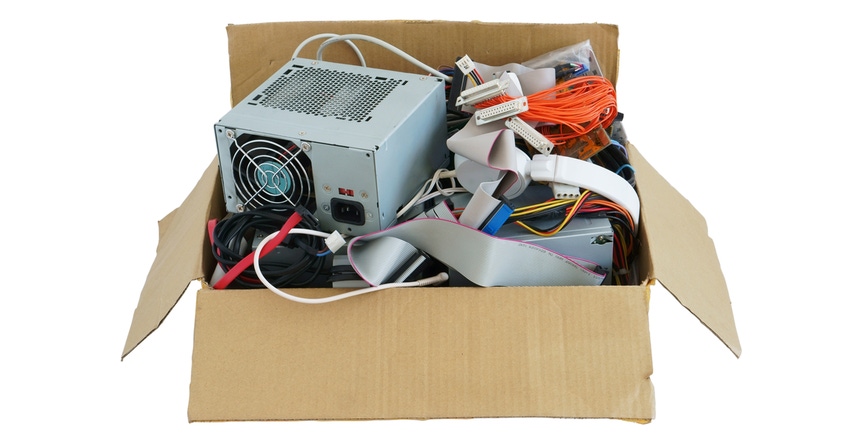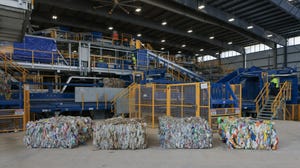University of New South Wales Researcher Leverages E-Waste to Strengthen Steel

A new technology has been developed at the University of New South Wales’ (UNSW) Sustainable Materials and Research (SMaRT) Centre to extract valuable materials and elements from traditionally hard-to-recycle waste to make strengthening layers for steel.
Lead researcher Veena Sahajwalla, director of the University’s Sustainable Materials and Research Centre, describes the process as ‘material microsurgery,’ which uses thermal transformation techniques to extract from electronic waste core elements in order to make a high-performance “hybrid” layer, which is chemically bonded on steel, to improve performance of the steel’s surface.
“We use the term material microsurgery because we were inspired by the processes medical surgeons use in microsurgery where they apply targeted and selective solutions to problems,” says Sahajwalla.
“Existing waste and recycling technology doesn’t do this for our traditional waste treatments. We need to step up to do the things that were thought unimaginable for waste management so it can be cutting edge,” she says.
Electronic waste in particular, which she is focusing on, calls for unique innovation to address tough problems. These materials, quickly stockpiling on landfills, typically contain minute amounts of many materials that are hard to separate for reuse.
Sahajwalla’s research, reported in the journal American Chemical Society Omega, entailed working with computer monitor glass, carbon extracted from plastic components from monitor shells and copper from printed circuit boards (PCB) to produce a hybrid thin film layer on a steel surface. This “material microsurgery” process involved several steps.
First, the researchers applied high heat to glass and plastic powder from old computer monitors in order to make silicon carbide nanowires. Then they ground circuit boards, mixed the nanowires with the ground material, and put the mixture on a steel surface. They heated the material again, melting the copper to form a silicon carbide-enriched hybrid layer on top of the steel.
Sahajwalla and study co-author Rumana Hossain stated in their report, “This ‘material microsurgery’ technique has the potential to transform waste into new hybrid surface coatings, which endows the base materials with superior properties to those seen in the source materials. For example, the SiC- (silicon carbide) nanowire-reinforced Cu (copper) layer added to steel in this study improved the hardness of the base material.”
The UNSW team’s focus is driven by the need, not only to reform complex waste items into value-added materials, but to do so through decentralized manufacturing, says Sahajwalla.
The SMaRT Centre’s “Microfactorie” technologies are small and mobile and can therefore be located at sources of waste or manufacturing sites where unwanted materials can be reprocessed and used again. According to the researchers, this decentralized model that joins recycling and manufacturing capability in modular units can, for instance, transform glass, textiles, and plastics into new materials and products such as green ceramics for the built environment (construction, design, furniture, floorings, etc.) as well as incorporate filament as a feedstock for various end users such as those who do 3D printing.
A key challenge with existing centralized recycling and waste treatment methods points out Sahajwalla, is that “at scale they often just turn things like PET (polyethylene terephthalate) bottles back into PET bottles. What we need is a recycling and manufacturing system that can innovate to reform waste for more diverse and value-added end uses … we need to start treating these waste items as the renewable resources they really are.”
Now Sahajwalla is beginning to look into using the Microfactories technology to develop additional alternatives to coke and coal.
Professor Emeritus John A. Mathews, Macquarie Business School, Macquarie University, Sydney, Australia, has done similar research, though focused on technologies leveraged on waste streams in China, such as “urban mining” of electronic PCBs to extract copper and other materials from electronic waste.
Based on what he has learned through his research, Mathews says:
“The work led by Professor Sahajwalla demonstrates superior technical characteristics of “urban mined” copper from PCBs, utilizing nanotechnical, high-temperature materials pathways.”
But he says that further government support will be needed for this nano-based research before it can be commercialized and scaled up.
He sees opportunities for Australian and western commercial interests generally to develop and scale nano-based technologies to supply existing urban mining markets, specifically to deal with electronic waste in China.
“The scope for extraction of valuable materials from waste streams like electronic waste, utilizing advanced nanotechnologies, is huge. It can only be expected to grow, as China leads the way to shift its material manufacturing processes from the linear economy (take, make, discard) to the circular economy,” says Mathews.
Xianlai Zeng, associate professor, School of Environment, Tsinghua University, Beijing China, considers the process to transform e-waste into a strong metal coating as innovative and promising, but he pointed out that it’s still at lab scale and energy intensive, and said that the economic benefit is still not clear.
Further, he questions microrecycling’s ability to manage the tremendous capacity of e-waste.
But, says Zeng, “If the final product of strong, protective coating for metal has a very huge market, it will elevate the practicability of this recycling process.”
About the Author(s)
You May Also Like




